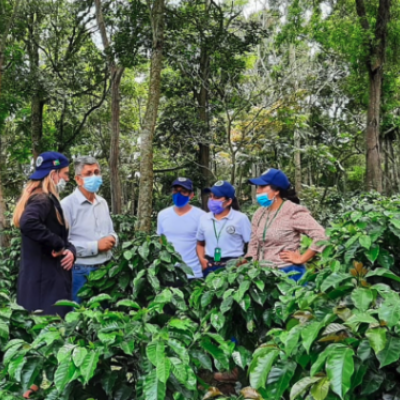Circular Cotton Cascade
project results

The process from cotton cultivation to finished product involves many different players. This makes the cotton chain very complex and does not benefit transparency. Moreover, a lot of water, energy and land is used to grow cotton and a lot of waste and pollution is generated in the production and consumption of cotton products. Time for a circular cotton chain based on regenerative cotton and optimal chain cooperation, something CSR Netherlands has been working towards for the past two years with the Circular Cotton Cascade project.
The Circular Cotton Cascade (CCC) project is fighting for the development of a circular cotton supply chain, where cotton is reused multiple times and eventually 'returned' to nature as a raw material. The underlying aim of the project? To show the textile sector how important collaboration in the chain is for making sustainable products and that cotton can be grown in a regenerative way: good for India's small-scale and indigenous farmers and good for the environment.
These companies participated
The project is a collaboration between several partners from the Netherlands and India, including cotton farmers, textile producers, garment manufacturers, waste processors and researchers. The Dutch partners are Avans Hogeschool, which leads and researches the project; GVK Society, which connects Indian cotton farmers to the European market; Havep, which makes sustainable workwear; Yassasree B.V., which manufactures clothing in India, CWS, which produces towel rolls; i-did, which fibres textile waste; Sympany, which collects textiles; Upset, which recycles textiles; and bAwear, which promotes transparency and impact of textiles on the environment. CSR Netherlands acted as the voice of the sustainable business community and intensively involved its partners in the cotton cascade.
The project focused on four major issues:
Multiple value creation: through a tiered process (cascading) worked to improve the quality of the regenerative cotton by using non-GMO seeds, natural fertilisers and pesticides;
Equity in the chain: By involving farmers and guaranteeing them a fair price, giving them input and letting them pay fair prices for the cotton produced;
Circular economy: collecting and recycling the clothes after use through a return and reward system, and processing the textile waste into new raw materials, such as yarn, felt or root cloth;
Biodiversity: returning the textile waste to the soil, where it serves as compost for cotton plants or other crops, thus closing the circle.
"In this project, we see cotton as the solution and not the problem"
Sanne van den Dungen, Raddis Cotton
The project is important because it is primarily about (re)valuing cotton. Sanne van den Dungen of Raddis Cotton, creator along with Aneel Kumar Ambavaram and initiator of the CCC project, explains: "The starting point of the Circular Cotton Cascade is regenerative cotton, grown in India by small-scale indigenous farming families with a focus on women empowerment. Cotton as the solution rather than the problem. Then we start with the end in mind: how, according to the Cradle to Cradle® vision, can cotton eventually return to the biosphere to still have a positive impact on soil fertility, water retention capacity and weed suppression during degradation. This forms the ultimate set of requirements for all steps in between and invites the chain partners to work closely together. How can cotton be recycled multiple times and always be used at the highest possible quality? How can joint business models be drawn up (collaborative business models)? And how can we track the cotton through the chain (digital product passports)?"
"Cotton cascading is no longer a project in which companies from India and the Netherlands work together, but a consortium of partners pursuing the same goals."
Thalia van Mensvoort, CWS
Results
The Circular Cotton Cascade focused on the question of how cotton can be grown, processed and reused in a fair and healthy way. In the first phase, a lot of research was done especially on the theory of cascading: making the best use of raw materials in each step of production. To this end, we worked closely with experts and conducted tests with regenerative cotton. The second phase (for which a Kia-CE grant was applied for - and received) will put the theory into practice and build on the strong connection that has now been created between all partners in the chain.
All the findings have been compiled in a digital interactive book which can be found on the Cotton Cascade website.
How to proceed
The project was completed in December 2023, but cooperation between the partners continues. A Kia-CE has been applied for as a follow-up grant to enable a second phase of this project, moving to action to enable the circular cotton supply chain. This will include work to strengthen market demand for circular cotton products, through communication, transparency, materials passports, redesign and policy advocacy.

Contact
Want to know more about this project? Contact Bianca at b.streng@mvonederland.nl.

Bianca Streng
Sectormanager Textiel
Maybe you'll find this interesting


